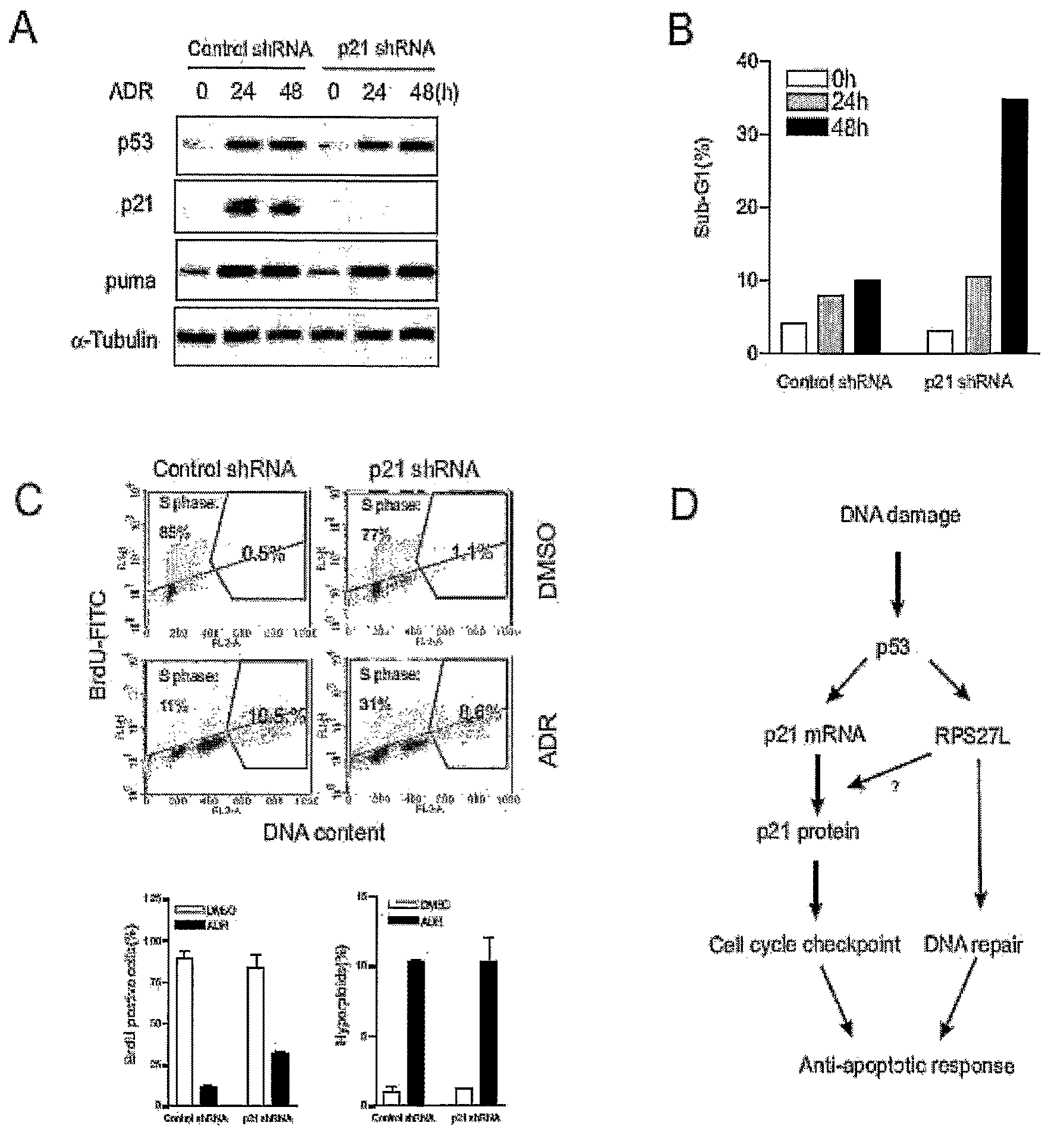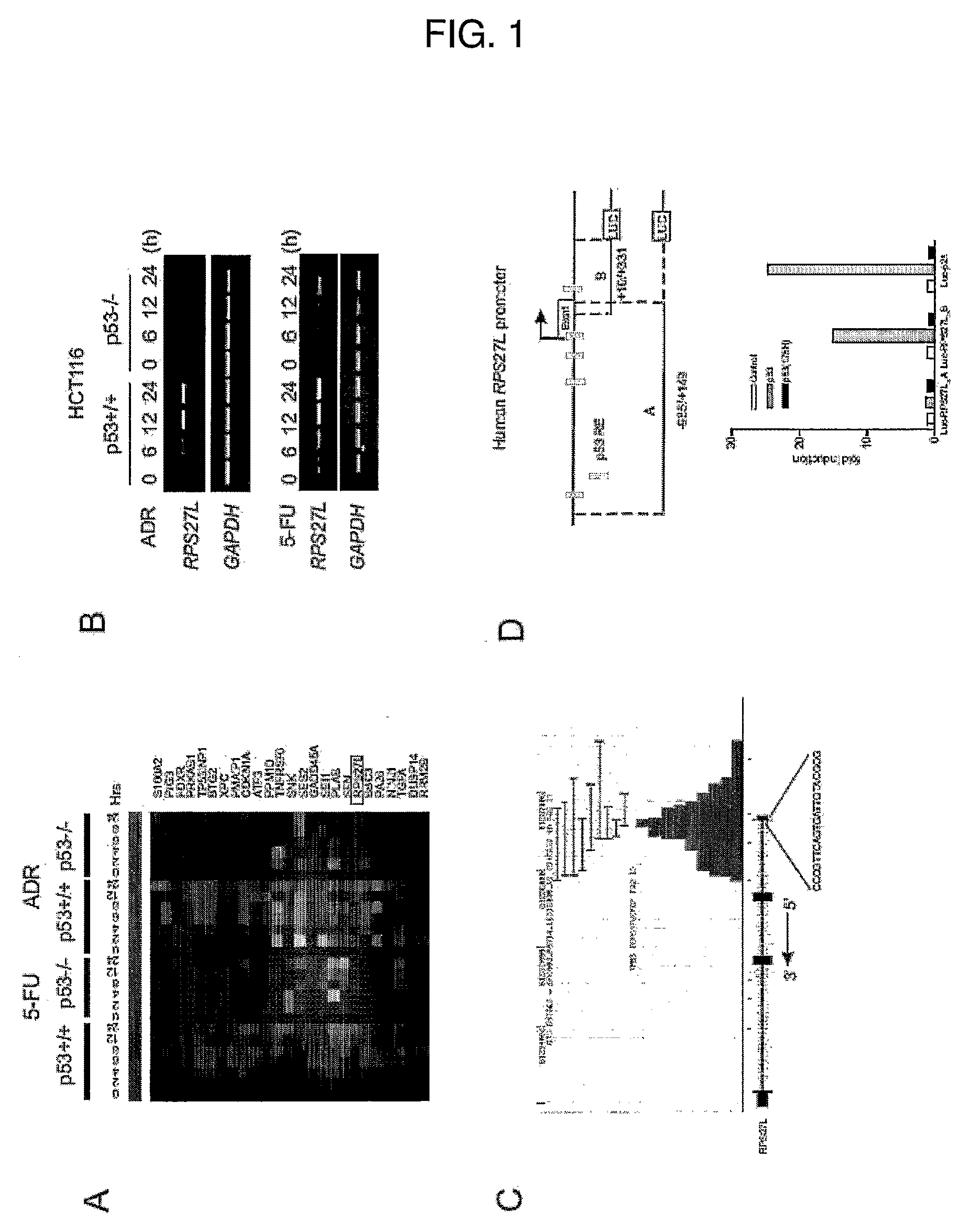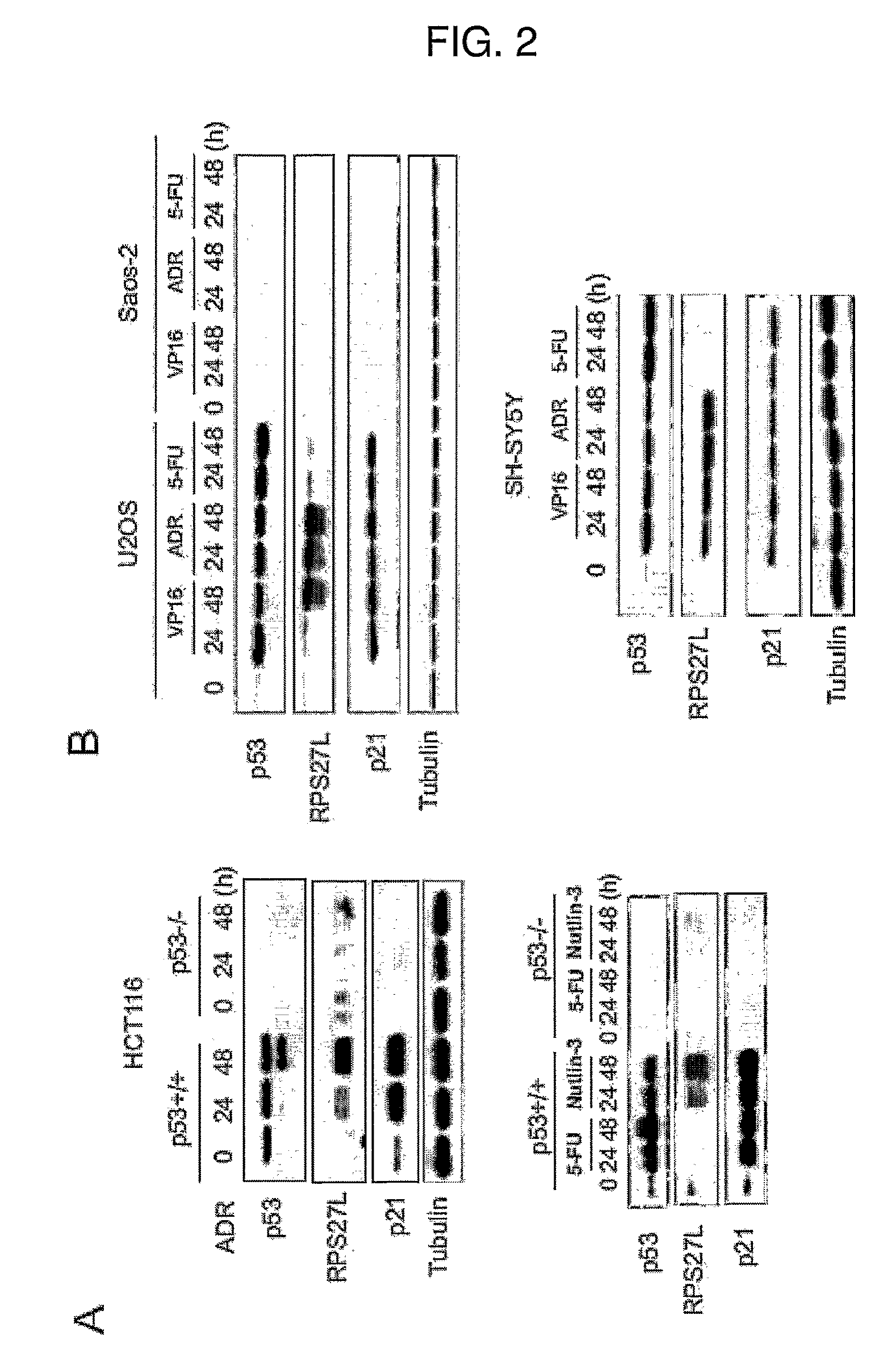Sensitizing a cell to cancer treatment by modulating the activity of a nucleic acid encoding rps27l protein
- Summary
- Abstract
- Description
- Claims
- Application Information
AI Technical Summary
Problems solved by technology
Method used
Image
Examples
experimental example 1
Genomic Analysis Identifies RPS27L as a Direct Transcriptional Target of p53
[0064]p53 exerts its tumor suppressor function predominately through transcriptional regulation on downstream targets (Vogelstein, B., Lane, D. and Levine, A. J. (2000), supra; Vousden, K. H. and Lu, X. (2002), supra). In previous work to identify additional p53 downstream targets through genome-wide mapping of p53 binding loci (Wei, C. L., Wu, Q., et al., (2006), supra), it was observed that RPS27L, which encodes the ribosomal protein S27-like (RPS27L) with a previously unknown function, was potentially regulated by p53. RPS27L is located on chromosome 15 of the human genome with the position 61235856 to 61237660.
[0065]FIG. 1A depicts the microarray analysis showing a set of genes whose expression was induced by the DNA damaging agents adriamycin (ADR) and 5-fluorouracil (5-FU) in p53 wild-type HCT116 cells (human colorectal carcinoma cell line containing wild type p53) but not in the p53 null counterpart. ...
example 2
p53-Dependent RPS27L Protein Induction is Stimuli-Dependent
[0069]To investigate whether the p53-induced increase in RPS27L mRNA also gives rise to the increased protein levels, immunoblot analysis of p53 wild-type and p53 null HCT116 cells treated with ADR, 5-FU or nutlin-3, a small molecule MDM2 antagonist that directly activates p53 (Vassilev, L. T., Vu, B. T., et al. (2004) “In vivo activation of the p53 pathway by small-molecule antagonists of MDM2” Science, vol. 303, p. 844-848) was performed. ADR and nutlin-3 treatment resulted in the accumulation of p53 and p21. An antibody raised against RPS27L detected increased RPS27L protein levels over time following ADR or nutlin-3 treatment (FIG. 2A). However, 5-FU-induced upregulation of RPS27L mRNA did not give rise to increased protein level. Instead, RPS27L protein level was downregulated, which was in striking contrast to the increased p21 protein expression, along with p53 activation. To extend this observations to other cell lin...
example 3
RPS27L Depletion Converts p53-Dependent DNA Damage Response from Growth Arrest to Cell Death
[0070]In HCT116 cells, it is known that the DNA damaging agent ADR induces p53-dependent cell cycle arrest (increased number of hyperploid cells (4N)), whereas 5-FU treatment triggers p53-dependent apoptosis (Bunz, F., Hwang, P. M., et al. (1999), supra; Tan, J., Zhuang, L., et al. (2005), supra) (FIG. 3A). Since increased RPS27L protein expression is correlated with the cell cycle arrest phenotype, the inventors next set out to determine whether RPS27L knockdown in HCT116 cells will render apoptosis rather than cell cycle arrest upon ADR treatment. To achieve this aim, the inventors silenced RPS27L expression using small interfering RNA (siRNA) of SEQ ID NO: 1. The targeted sequence for siRNA was efficient and specific as it nearly completely ablated RPS27L expression and prevented its induction after DNA damage, while having no effect on closely-related RPS27 (FIG. 3B). To facilitate the st...
PUM
| Property | Measurement | Unit |
|---|---|---|
| Antisense | aaaaa | aaaaa |
| Chemotherapeutic properties | aaaaa | aaaaa |
Abstract
Description
Claims
Application Information
 Login to View More
Login to View More - R&D
- Intellectual Property
- Life Sciences
- Materials
- Tech Scout
- Unparalleled Data Quality
- Higher Quality Content
- 60% Fewer Hallucinations
Browse by: Latest US Patents, China's latest patents, Technical Efficacy Thesaurus, Application Domain, Technology Topic, Popular Technical Reports.
© 2025 PatSnap. All rights reserved.Legal|Privacy policy|Modern Slavery Act Transparency Statement|Sitemap|About US| Contact US: help@patsnap.com



